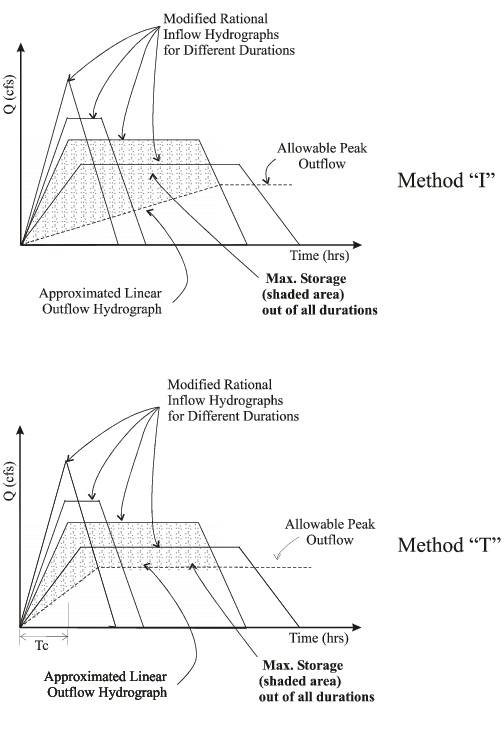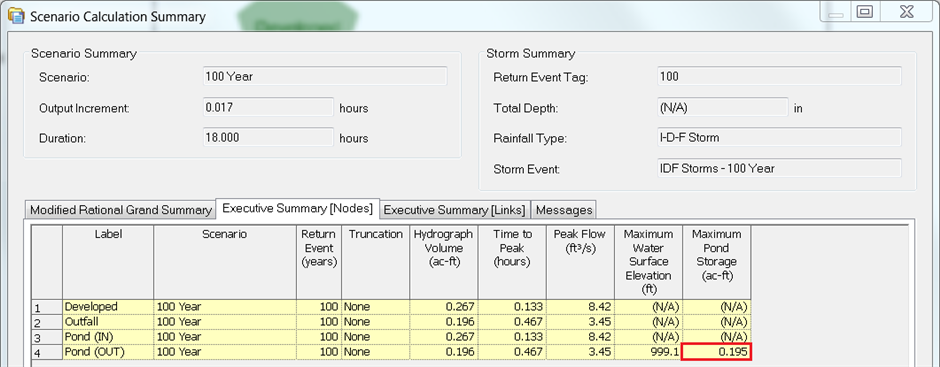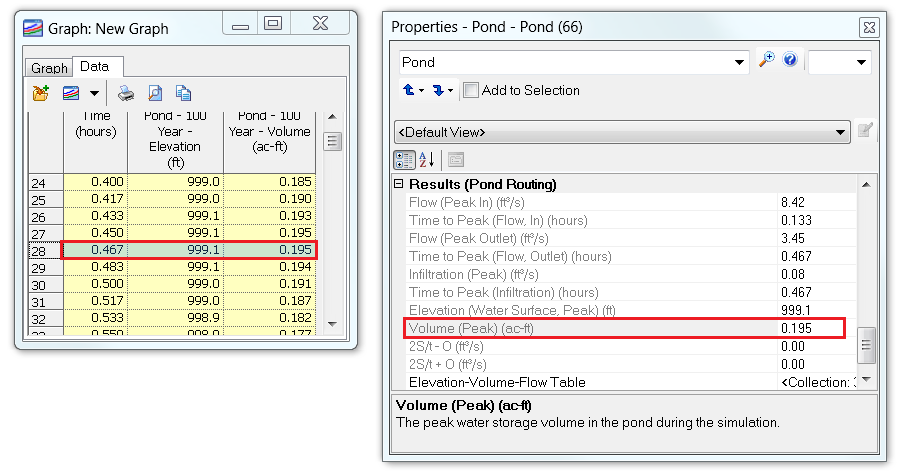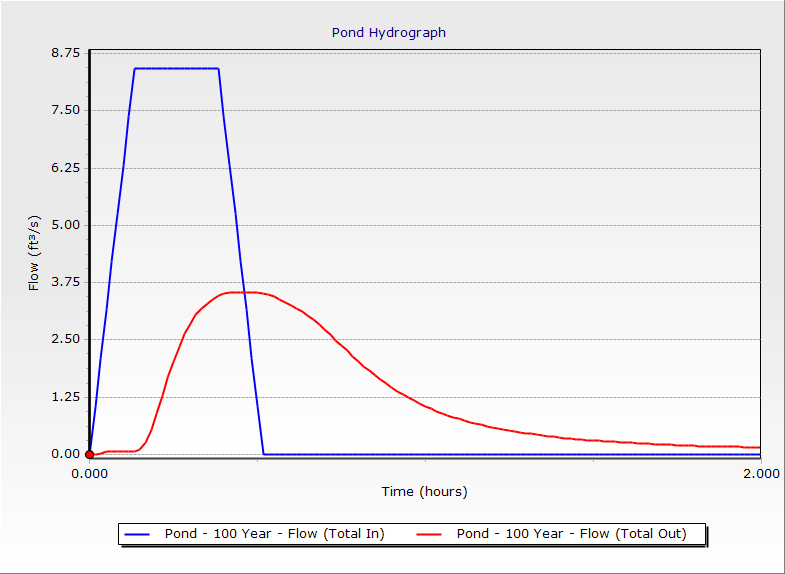| |
Product(s): |
PondPack |
|
| |
Version(s): |
N\A |
|
| |
Area: |
Output and Reporting |
|
Problem
In PondPack, the Scenario Calculation Summary dialog has Volume (Storage) listed on the Modified Rational Grand Summary tab, and has Maximum Pond Storage listed on the Executive Summary [Nodes] tab.
What is the difference between these values?
Note: This only applies when the contributing catchment uses the Modified Rational Method.
Solution
“Volume (Storage)” in the Modified Rational Grand Summary is the estimated storage volume, used as part of the calculation of the critical storm duration.

This value corresponds to the "Storage (Modified Rational, Estimated)" field in the catchment properties.

See the third paragraph under “PondPack Implementation” in this article. In the graphic below, the estimated storage is the shaded area.

The program calculates this shades area for a range of storm durations (Td) and reports the maximum value in the Grand Summary as the “Volume (storage)” with corresponding critical storm duration (Td) as the “Duration”. The program creates a runoff hydrograph based on this critical storm duration and then routes that through the actual model.
Maximum Pond Storage
The “Maximum Pond Storage” value in the executive summary is the actual volume stored in the pond when it was at its maximum (volume in the pond at the peak level).

When the pond elevation and volume are graphed over time, the Maximum Pond Storage value in the Scenario Calculation Summary corresponds to the maximum volume value in the Data tab. This value will also appear as "Volume (Peak)" in the properties dialog for the pond.

This can be different than the estimate from the Modified Rational Grand Summary, mainly due to the assumption of the shape of the “approximated linear outflow hydrograph” (in graphs above). During the iterations of finding the critical storm duration, it uses either a straight line for this (method “I”) or a shape that resembles the runoff hydrograph (method “T”).
However, when you actually compute the model and route the runoff hydrograph through the pond, the shape of the pond outflow hydrograph is going to be different than the method “I” or “T” and the peak may not be exactly equal to the target peak (depends on the outlet structure).
The following hydrograph shows that the actual shape of the outflow hydrograph (red) is not linear.

Therefore, the computed max pond volume may be different than the estimated storage volume.
See Also
Understanding the Modified Rational Method

| |
Original Author: |
Craig Calvin |
|